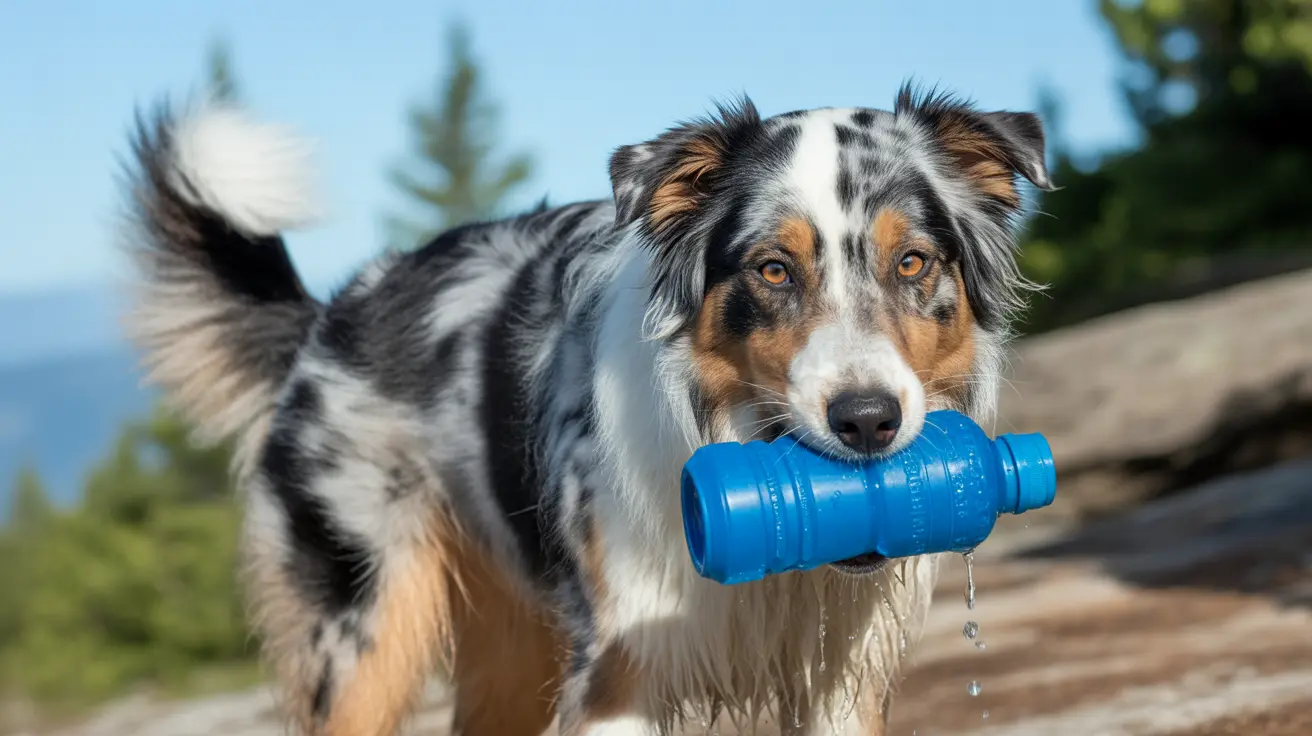Complete Dog Travel Gear Checklist: Essential Packing Guide for Safe Pet Adventures
Traveling with your furry companion can be one of life's most rewarding experiences, but it requires careful planning and the right equipment to ensure both safety and comfort. Whether you're embarking on a cross-country road trip, flying to an international destination, or heading out for a weekend camping adventure, having a comprehensive dog travel gear checklist is essential for a successful journey.
This guide provides dog owners with everything they need to know about packing for pet travel, from must-have safety equipment to specialized gear for different types of trips. By following this complete checklist and preparation tips, you'll be equipped to handle any travel scenario while keeping your four-legged family member happy, healthy, and secure throughout your adventure.
Essential Safety Equipment for Dog Travel
Safety should always be your top priority when traveling with your dog. The right safety equipment can prevent accidents and ensure your pet remains secure during transport, regardless of your chosen mode of travel.
Secure Transport Options
A sturdy travel crate or carrier is fundamental for safe dog transport. For air travel, ensure your carrier conforms to IATA standards and meets specific airline requirements. Small dogs can travel in the cabin using soft-sided carriers, while larger dogs require hard-sided crates for cargo transport. When driving, a crash-tested car safety harness that fastens with seat belts provides essential protection during sudden stops or accidents.
Seatbelt harnesses offer an alternative to crates for car travel, allowing your dog some movement while maintaining safety. Choose a harness specifically designed for vehicle use, as regular walking harnesses don't provide adequate crash protection. Always secure your dog in the back seat, never in the front where airbags could cause injury.
Identification and Documentation
A secure collar with current ID tags containing your contact information is non-negotiable. Include your phone number and destination address rather than your home address during travel. Keep your dog's microchip number and monitoring company contact information readily accessible, and carry a recent photo of your pet in case they become lost.
For travel documentation, pack vaccination records including rabies certificates, and research specific requirements for your destination. Some locations require additional health certificates or specific vaccinations completed within certain timeframes before travel.
Food and Water Essentials
Maintaining your dog's nutrition and hydration during travel requires portable, practical solutions that don't compromise on quality or convenience.
Portable Feeding Solutions
Collapsible travel bowls are space-saving essentials that provide durable, portable feeding options. Look for bowls made from food-grade materials that can withstand repeated folding and cleaning. Some designs include carabiner clips for easy attachment to backpacks or travel bags.
A waterproof travel food carrier with a built-in measuring cup helps maintain proper portion control while protecting food from moisture and pests. Store your dog's regular food in airtight containers or resealable bags, packing the exact amount needed plus a few extra days' worth for unexpected delays.
Hydration Management
Portable travel bottles designed specifically for dogs make it easy to provide fresh water during stops. Many feature attached bowls or dispensing mechanisms that minimize waste and mess. Always carry more water than you think you'll need, especially during hot weather or outdoor activities where your dog's hydration needs increase significantly.
Comfort and Familiar Items
Helping your dog feel at home in unfamiliar environments is crucial for reducing travel anxiety and ensuring restful sleep during your trip.
Bedding and Sleep Essentials
A low-profile travel bed or portable mat provides your dog with a familiar sleeping surface that works both indoors and outdoors. Choose lightweight, packable options that offer adequate cushioning and insulation from cold ground. For camping trips, consider a lightweight sleeping bag designed for dogs to provide extra warmth during cold nights.
Pack familiar blankets or old towels that carry your home's scent. These comfort items help reduce anxiety and provide your dog with something familiar in new environments. They also serve practical purposes as car seat covers, picnic blankets, or extra bedding.
Toys and Mental Stimulation
Interactive toys and chewables provide mental stimulation during long travel days and help prevent boredom-related behavioral issues. Choose durable options that won't break apart and create choking hazards. Familiar toys from home offer comfort, while new puzzle toys can keep your dog engaged during downtime at accommodations.
Specialized Gear by Travel Type
Different types of trips require specific equipment to address unique challenges and environments your dog will encounter.
Air Travel Accessories
Air travel with dogs requires specialized equipment beyond basic carriers. For cabin travel, use a soft-sided carrier that fits under the seat and allows your dog to stand and turn around comfortably. Attach collapsible bowls to the crate and include absorbent mats for longer flights.
Pack an item with your scent, such as a worn t-shirt, to provide comfort during the separation. Non-metallic leashes and harnesses speed up airport security screening. Always include familiar blankets or towels to help your dog feel secure in the unfamiliar airport and aircraft environment.
Outdoor Adventure Equipment
Camping and hiking trips require gear that protects your dog from the elements while ensuring they can fully participate in outdoor activities. Dog boots protect paws from rough terrain, hot surfaces, and sharp objects during hiking expeditions. Choose boots with secure closures that won't slip off during active movement.
Weather protection is essential for outdoor adventures. Pack a rain jacket for short-haired dogs and a packable winter coat for cold weather destinations. LED collar lights improve visibility during early morning or evening activities and help you keep track of your dog in low-light conditions.
Water Activity Gear
Beach and lake vacations require specialized equipment for water safety and comfort. A properly fitted dog life jacket is essential for any water activities, even if your dog is a strong swimmer. Choose jackets with handles on top for easy lifting and bright colors for visibility.
Quick-drying microfiber towels are superior to regular towels for beach trips, as they're more absorbent and take up less space when packed. Waterproof toys that float make water play more enjoyable while ensuring toys won't sink and become lost.
Health and Emergency Preparedness
A well-stocked first aid kit and proper health preparations can mean the difference between a minor incident and a travel emergency.
First Aid Kit Essentials
Your canine first aid kit should include a first aid manual, gauze, non-stick bandages, adhesive tape, and cotton balls for wound care. Pack hydrogen peroxide, antibiotic spray or ointment, and antiseptic wipes for cleaning cuts and scrapes. Essential tools include scissors, tweezers, a magnifying glass, and a digital thermometer for basic health assessments.
Include any medications your dog takes regularly, plus extras in case of travel delays. Pack tick protection and flea prevention products appropriate for your destination's climate and season. A soft muzzle can be invaluable for injured dogs who might bite due to pain or fear.
Pre-Travel Health Preparation
Schedule a pre-travel veterinary checkup to ensure your dog is healthy enough for travel and up to date on all necessary vaccinations. Discuss your travel plans with your veterinarian to address any destination-specific health concerns or required treatments.
Research and compile a list of local veterinarians and emergency animal hospitals at your destination. Keep this information easily accessible along with your home veterinarian's contact details. Consider pet health insurance with international coverage for peace of mind during overseas travel.
Practical Travel Organization
Efficient packing and organization make traveling with your dog significantly easier and ensure you can quickly access needed items during your journey.
Luggage and Organization
Use a dedicated pet travel bag with multiple compartments for organizing food, water, toys, medications, and grooming supplies. This keeps all dog-related items together and makes security screening faster at airports. Ensure your chosen bag complies with airline size restrictions if flying.
A dog backpack allows your pet to carry their own supplies during hiking trips, providing mental stimulation and reducing your load. Choose packs with adjustable fits and padding for comfort, and gradually acclimate your dog to wearing the pack before travel.
Waste Management and Grooming
Always pack more waste disposal bags than you think you'll need, along with a convenient dispenser that clips to leashes or bags. Choose biodegradable options to minimize environmental impact. Include grooming wipes for quick cleanups between formal grooming sessions and pack a brush or comb suitable for your dog's coat type.
For longer trips, pack basic grooming supplies including nail clippers, ear cleaning solution, and any special shampoos your dog requires. A quick-drying microfiber towel serves multiple purposes from bath time to beach visits.
Planning and Accommodation Strategies
Successful dog travel begins long before departure with careful planning and strategic booking decisions that ensure both you and your pet have comfortable accommodations.
Booking Dog-Friendly Accommodations
Research and book pet-friendly accommodations well in advance, as options may be limited during peak travel seasons. Read reviews from other pet owners to understand the actual pet amenities and policies. Confirm pet fees, weight restrictions, and any specific rules before booking to avoid surprises upon arrival.
Consider accommodations with outdoor space, nearby walking areas, and easy access to veterinary care. Some hotels offer special pet amenity packages including beds, bowls, and treats, which can reduce your packing load.
Travel Timing and Route Planning
Plan travel timing carefully to avoid extreme temperatures that could stress your dog or create safety hazards. Schedule regular breaks every 2-3 hours during road trips for exercise, hydration, and bathroom needs. Research pet-friendly stops along your route, including dog parks, pet stores, and restaurants with outdoor seating.
For air travel, book direct flights when possible to minimize stress and reduce the risk of your dog being mishandled during connections. Choose departure times that align with your dog's natural schedule and avoid peak travel periods when possible.
Frequently Asked Questions
- How should I pack dog food for travel?
Weigh and pack the exact amount of your dog's regular food needed for the trip, plus 2-3 extra days' worth for unexpected delays. Store food in airtight containers or heavy-duty resealable bags to maintain freshness and prevent pest contamination. For air travel, check airline regulations regarding food transport and consider shipping food to your destination for extended trips.
- What safety equipment is most important for car travel with dogs?
A crash-tested safety harness or secured travel crate is essential for protecting your dog during car travel. The harness should fasten with existing seat belts and be specifically designed for vehicle use. Never allow dogs to ride unrestrained, in the front seat, or with their head out the window, as these practices create serious safety risks.
- How can I help my anxious dog adjust to travel?
Start with short practice trips to acclimate your dog to travel routines and equipment. Bring familiar items like blankets, toys, or clothing with your scent to provide comfort. Maintain calm energy yourself, as dogs pick up on their owner's stress levels. Consider consulting your veterinarian about anti-anxiety medications or natural calming aids for severely anxious dogs.
- What documentation do I need for international travel with my dog?
Requirements vary by destination, but generally include health certificates, vaccination records (especially rabies), and sometimes specific parasite treatments completed within designated timeframes. Some countries require pet passports or lengthy quarantine periods. Contact the embassy or consulate of your destination country at least 3-6 months before travel to understand specific requirements.
- How do I find veterinary care while traveling?
Research and save contact information for veterinarians and emergency animal hospitals at your destination before departure. Many veterinary clinics have websites with after-hours contact information. Pet insurance companies often provide 24/7 helplines that can assist with finding care. Some smartphone apps specialize in locating nearby veterinary services.
- What should I do if my dog gets lost during travel?
Immediately contact local animal shelters, veterinary clinics, and post on social media with your dog's photo and your contact information. Having current ID tags with your travel contact number and a recent photo can significantly speed up reunification. Microchip registration should be updated with travel contact information before departure.
- Is pet insurance worth it for travel?
Pet insurance with international coverage provides valuable financial protection and peace of mind during travel, especially for overseas trips where veterinary costs can be extremely high. Even domestic travel insurance can help cover emergency treatments that might otherwise cost thousands of dollars. Review policy details carefully to understand coverage limits and exclusions.
Conclusion
Successful travel with your dog depends on thorough preparation, quality equipment, and attention to your pet's individual needs. This comprehensive dog travel gear checklist covers everything from essential safety equipment to specialized gear for different types of adventures. By investing in the right travel accessories and taking time to prepare properly, you can ensure safe, comfortable journeys that create lasting memories for both you and your canine companion.
Remember that every dog is unique, and your travel gear checklist should be customized based on your pet's size, temperament, health needs, and the specific demands of your planned activities. Start with the essentials covered in this guide, then add specialized items based on your travel style and destination requirements. With proper preparation and the right equipment, traveling with your dog can be one of life's greatest adventures.






